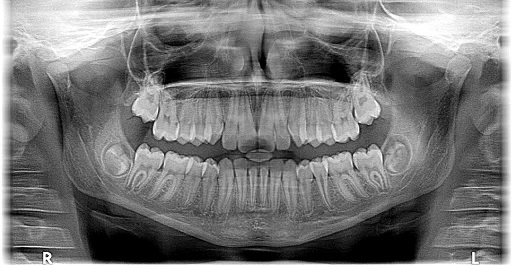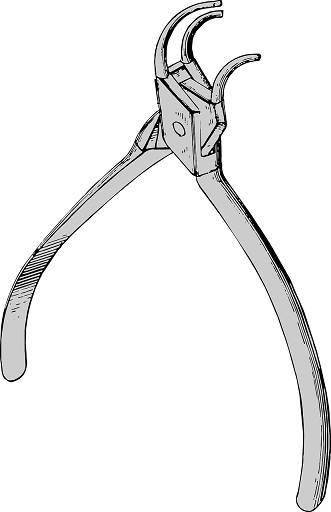What is the difference between a dentist and an orthodontist?
Pretty confusing – there are dentists and orthodontists and some dental care professionals even list the moniker "dental surgeon" on their websites and practice billboards. But which dental problems are best treated by which dental care professionals? When should you go to an orthodontist? Which treatments does an orthodontist perform that general dentists do not?Index
- What differentiates an orthodontist from a general dentist?
- What are orthodontic treatments?
- How are orthodontic treatments performed?
- When do you need an oral surgeon?
- Do insurances pay for orthodontic treatments?
What differentiates an orthodontist from a general dentist?
An orthodontist is also proficient in the field of general dentistry but not every dentist can perform orthodontic procedures - this means that every orthodontist has successfully completed a general dentistry degree. While there is an additional specialization track in German dental schools for orthodontics, Austrian dental schools have yet to expand their curriculum to match such an offering for dentistry students. Instead, in Austria, a new dentist's specialization after completing all required courses of study depends on whether a particular student proactively decides to select a heavy course load focused on orthodontics or not (to quasi build his or her own orthodontics program). Nevertheless, there is an orthodontics society in Austria which requires its members to pass certain qualification tests before they are admitted.Orthodontics as a specialty focuses on the prevention, recognition, and treatment of mis-alignments of teeth and jaws. A general dentist, on the other hand, focuses on more standard dental procedures and oral hygiene, which all mostly concern diseases of the teeth themselves and of the gums.

X-ray of a patient's jaws prior to an orthodontic procedure
What are orthodontic treatments?
An orthodontist performs ongoing checkups of children and teens to keep track of the development of their jaws and to recognize and prevent any issues early on. This is particularly important as far as the alignment of milk teeth, tooth gaps, and the eventual emergence of permanent teeth are concerned. The ongoing checkups are essential because any orthodontic issues that are not fixed while a person is growing up need to be corrected via lengthy and much more costly procedures during adulthood.An orthodontist has to have an extensive bio-mechanical knowledge which is why he has to know how jaws and teeth interact with each other and affect the risk of each other's mis-alingment. Such mis-alignments are not only an optical problem but they can also lead to impediments with biting down, chewing, and swallowing.
To correct such conditions, an orthodontist can utilize several options from his or her repertoire including removable (overnight) braces, permanent braces, and other tools, including:
- Aligner Splints – removable splints that can be replaced every few weeks in order to achieve a gradual improvement in dental alignment. Some of the most popular splints of this kind are the invisible Invisalign splints that can be worn during the day as well as overnight.
- Brackets (metal or ceramic) – placed onto the outer side of teeth and connected via a metal wire – basically, the classical permanent braces.
- Inside Braces – placed onto the inner sides of teeth in an effort to make them almost invisible to the eye, which makes them aesthetically more desirable but more difficult to clean.
- Veneers – permanently placed onto a patient's teeth, made our of ceramic material, and almost indistinguishable from healthy teeth due to their white, tooth-like color.
How are orthodontic treatments performed?
The important first step prior to an orthodontic treatment is a thorough diagnosis and anamnesis. Usually, there is no more need for physical dental impressions to determine a patient's particular dental problem but, rather, the dentist uses modern visualization tools and scanners to support his or her diagnosis. For example, an x-ray of the upper and lower jaws can help with determining any alignment issues between the two.An orthodontic treatment usually takes several months because orthodontic devices, such as braces, only apply very light pressure to slowly, but gradually achieve the intended alignment improvements. Also, a slow treatment progression is required to not damage the roots of the teeth that are affected by the treatment.
When do you need an oral surgeon?
An oral surgeon has formal training not only in the fields of dentistry and orthodontics, but also in the field surgery. Such a specialist is required when orthodontic measures are no longer effective in fixing complex dental mis-alignments.
Forceps for orthodontic procedures
Do insurances pay for orthodontic treatments?
Children and some adolescents up to the age of 18 may qualify for free braces, paid for by insurance companies, if their dental mis-alignment issues are severe enough.Some Austrian insurers also partially reimburse the costs of permanent braces, though amounts may differ from case to case and insurer to insurer. Orthodontic treatments are usually covered by insurers.
As always, it is key to remember: If you as the patient are not sure what part of the costs of an orthodontic treatment your insurance will reimburse, call your insurance representative and ask for details to avoid unexpected surprises!
In the meantime, we would love to hear from you – please leave any thoughts and feedback in the comment box below and subscribe to our blog at any time and completely for free via our online portal.


